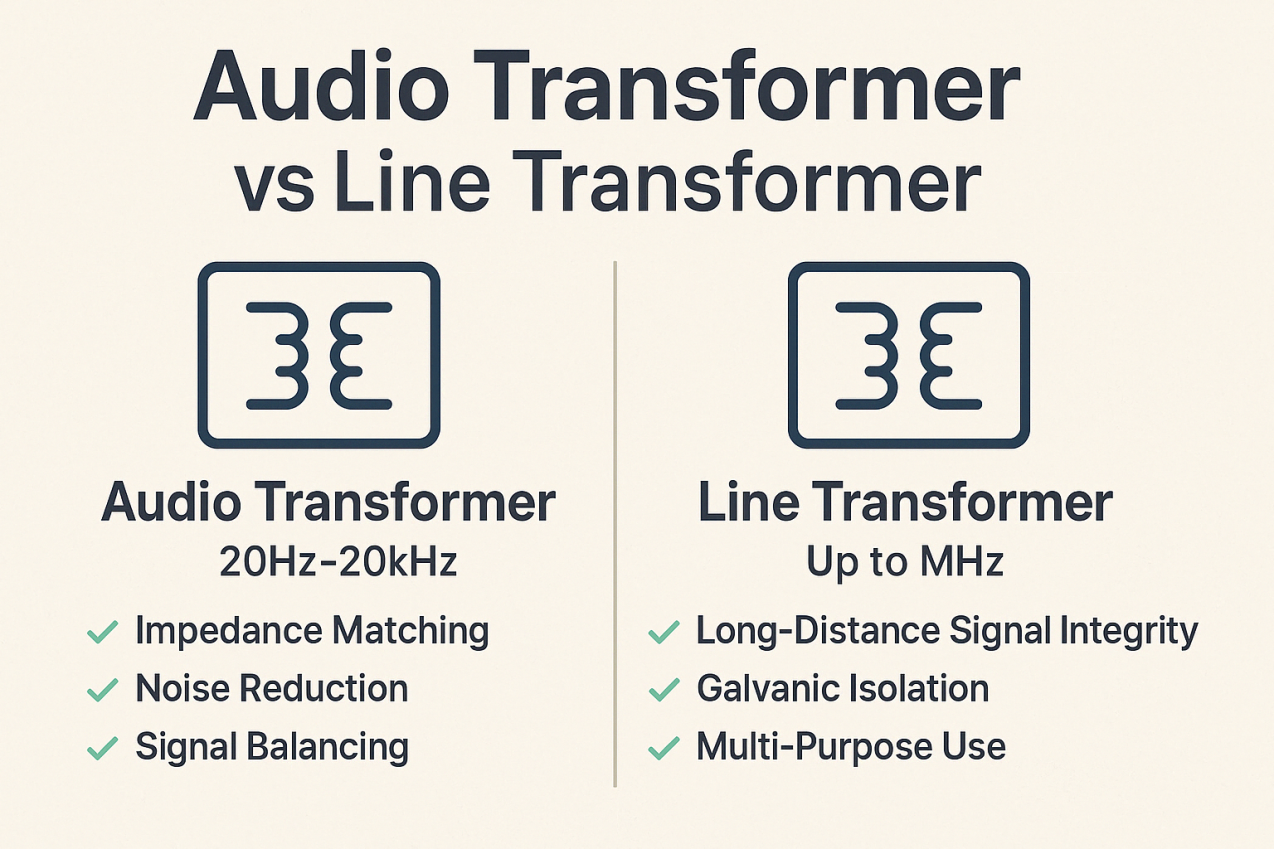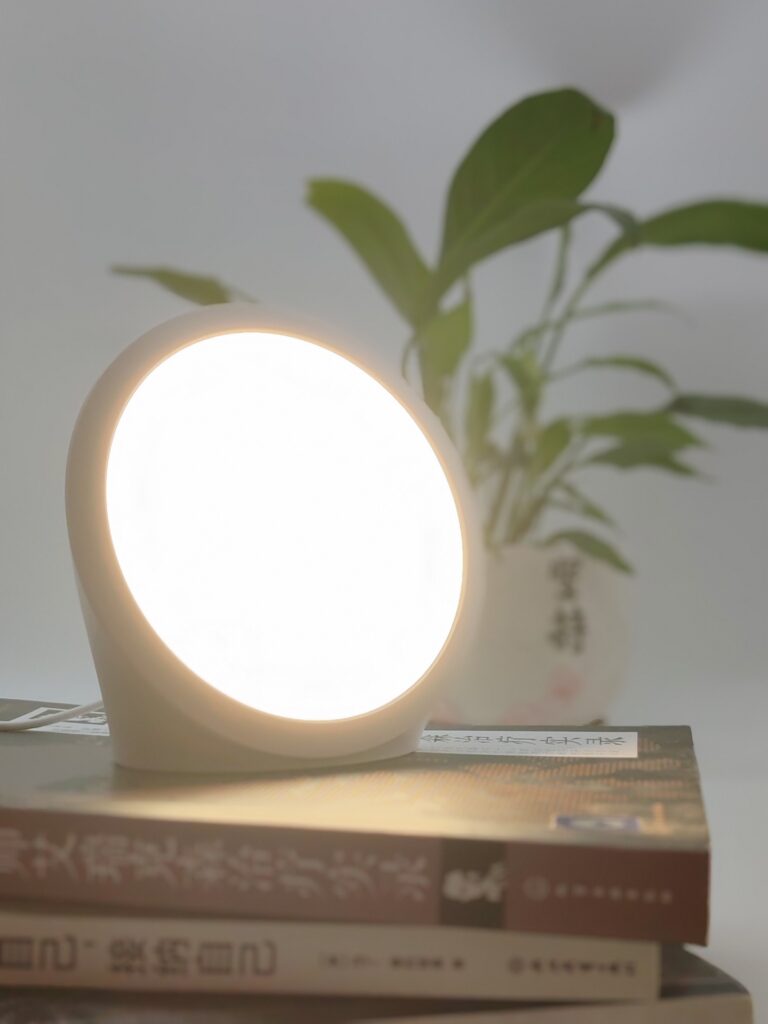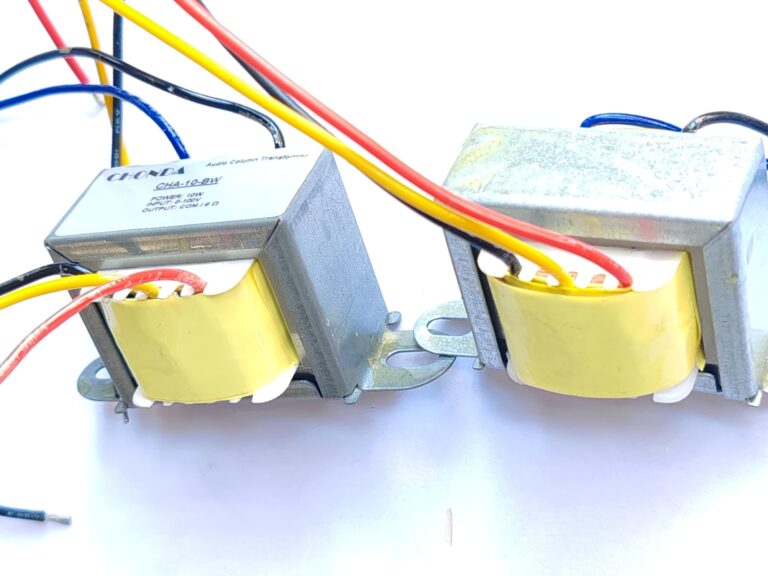We help the world since 2012

Audio Transformer vs Line Transformer: What’s the Difference? (Complete Guide)
If you’re working with audio equipment, you’ve likely encountered both audio transformers and line transformers. But what’s the difference, and which one is right for your setup? This guide breaks down everything you need to know—from key differences to real-world applications—so you can make the best choice for your audio needs.
What Is an Audio Transformer?
An audio transformer is a specialized component designed to handle sound frequencies, typically between 20Hz and 20kHz. These transformers are commonly found in:
- Microphone preamps (for impedance matching)
- Tube amplifiers (for signal coupling)
- Studio gear (for noise isolation)
Key Benefits of Audio Transformers
- ✔ Impedance Matching – Ensures optimal signal transfer between devices
- ✔ Noise Reduction – Blocks hum and interference
- ✔ Signal Balancing – Converts unbalanced signals to balanced
💡 Pro Tip: Facing ground loop issues? Check out our audio isolation transformer guide for practical solutions.
What Is a Line Transformer?
In contrast, a line transformer—also known as a signal transformer—is more versatile. It supports a wider frequency range, sometimes extending into the MHz. You’ll often see these used in:
- Telecom systems (telephone lines, Ethernet)
- PA systems (for long-distance audio transmission)
- Broadcast equipment (signal distribution)
Key Benefits of Line Transformers
- ✔ Long-Distance Signal Integrity – Maintains clarity over extended cable runs
- ✔ Galvanic Isolation – Prevents ground loops in balanced systems
- ✔ Multi-Purpose Use – Compatible with both audio and data signals
Audio Transformer vs Line Transformer: Key Differences
| Feature | Audio Transformer | Line Transformer |
|---|---|---|
| Frequency Range | 20Hz–20kHz | Up to MHz |
| Primary Use | Sound quality optimization | Reliable signal transmission |
| Best For | Studios, Hi-Fi systems | Telecom, live sound, broadcast |
| Price Range | $10–$300 | $5–$150 |
When to Use Each (Real-World Examples)
So, how do you know which transformer to choose? Here are some real-world use cases to help you decide.
Choose an Audio Transformer if:
- You’re recording vocals or guitars and want clean, noise-free signals
- You’re restoring vintage gear like tube amps or tape machines
- You need impedance matching for microphones
Choose a Line Transformer if:
- You’re sending audio over long distances (e.g., stage to mixer)
- You’re setting up a telecom or broadcast system
- You need basic noise isolation in a PA setup
Common Problems & Solutions
- “I hear a hum in my audio system.”
👉 Solution: Use an audio isolation transformer to eliminate ground loops. See our guide. - “My mic signal is too weak.”
👉 Solution: Try an audio transformer with the proper impedance ratio (e.g., 1:10 for microphones). - “I need to send audio 100+ feet without noise.”
👉 Solution: Combine a line transformer with balanced XLR cables for the best results.
Price Comparison & Buying Tips
| Type | Budget Option ($) | Professional Option ($$$) |
|---|---|---|
| Audio Transformer | Behringer MIC200 ($30) | Jensen JT-11P-1 ($200) |
| Line Transformer | ART DTI ($50) | Lundahl LL1540 ($150) |
💬 Reddit Recommendation: Many users favor Jensen and Lundahl in studio environments, while ART and Hammond perform well in live setups.
DIY & Advanced Tips
Are you building your own transformer? Keep in mind:
- Audio transformers require precision layering and tight tolerances.
- Line transformers are more forgiving and easier for DIY projects.
🧠 Bonus Tip: Use an online impedance calculator to ensure your gear matches perfectly.
advanced audio impedance calculatorFor studios and Hi-Fi setups, the audio transformer is your best bet. It improves sound clarity, reduces noise, and handles impedance matching with ease.
On the other hand, line transformers shine in telecom, live sound, and broadcast applications. They’re versatile, affordable, and reliable over long cable runs.
Still unsure? You can even use both in series to achieve maximum noise rejection in complex setups.
FAQ: Audio Transformer vs Line Transformer
Q: Can a line transformer be used for audio?
A: Yes, but it’s more suited for long-distance or non-critical listening. For studio-quality audio, stick to audio transformers.
Q: Are audio transformers worth the price?
A: For professional sound quality and noise isolation, they’re often essential.
Q: Do I need both types in a complex system?
A: In many cases, yes! Use audio transformers near sensitive sources and line transformers for longer cable runs.




